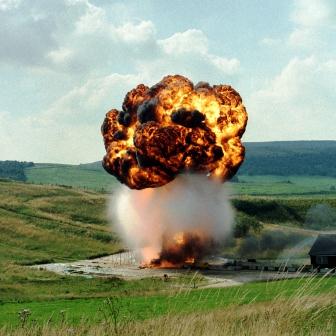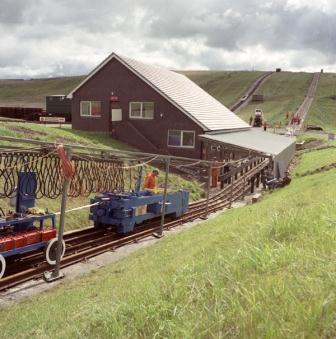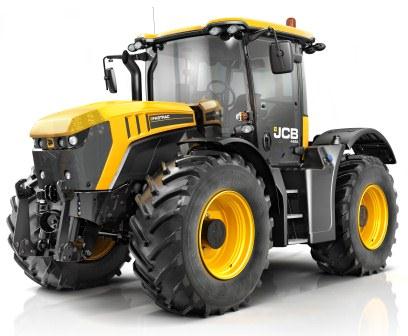HSE possesses a range of world class facilities for
small- and large-scale impact testing and high strain rate
testing.
We conduct impact testing both for private industry and as the
science and research centre of the Health and Safety Executive
(HSE). Examples of the types of projects we have worked on for our
clients include:
- Crashworthiness of railway vehicles
- Impact resistance of fuel tanks (automotive, plant, rail,
etc.)
- High speed impact testing of composite structures for the
aerospace industry
- Regulatory testing of transport containers for nuclear
fuel
- The performance of lifting slings under dynamic loading
- The dynamic performance of wire ropes and chains
- The dynamic tensile strength of webbings (such as those used in
fall arrest lanyards)
This unrivalled combination of facilities, experience and
expertise means that HSE's Impact Research facilities can fulfil
almost any type of safety-related impact work in areas such as
crashworthiness, secondary damage and regulatory testing.
Demonstrating our commitment to quality assurance, HSE's
Science and Research Centre is ISO 9001, ISO 14001 and ISO 18001
accredited.
Impact Testing Facilities
The impact testing and high strain rate testing facilities
provided 'off-the-shelf' by HSE include the longest gravity impact
track in Europe, indoor and outdoor drop test facilities, and high
velocity projectile delivery systems (gas guns).
All samples and prototypes tested in HSE's facilities can be
instrumented with strain gauges, accelerometers, pressure
transducers and load cells as required. Displacements can be
measured directly using high speed video, line scan cameras and
photo-electric sensors. High resolution laser scans can be provided
pre- and post- impact to assist in understanding any deformations
or damage that occurs.
Gas Gun High Velocity Projectile Delivery Systems
Our 25mm bore gas gun can test projectile masses typically
ranging from 1g to 1kg at speeds up to Mach 1, with the potential
for more depending upon requirements. The gas gun enclosure has two
ports for high speed video that can enable co-efficient of
restitution calculations. This facility can be used for test
coupons, whilst a large enclosure also allows us to test
components.
Main Impact Track 
Our 265 metre main impact track consists of a single railway
with two pairs of rails (outer and inner gauge)which run down
profiled banks on either side of a valley into a flat section - the
impact area - at the valley floor.
The track can be used in single or dual truck configurations which
is ideal for impact testing, collision testing, shock testing, high
strain rate testing, wire rope testing and other compressive or
tensile tests. For example, when two trucks are used on the
facility: a hammer truck runs on the outer gauge track and a sample
bearing truck runs on the inner.
The railway impact track has a 4MJ maximum impact energy
rating.
Haulage Impact Track
Adjacent to the main impact track facility is a slightly
narrower gauge haulage impact track. Originally designed for
testing haulage vehicles used in mines, this facility can also be
used for impact and crashworthiness testing.
Indoor 10 Tonne Drop Rig
HSE's indoor vertical drop tower has a 10-tonne capacity hoist
and a variable drop height up to a maximum for 4 metres. The rig's
vertical height control and drop release system is accurate to 1mm.
This means that the indoor drop tower is perfect for lower speed
impact tests (impact velocities up to 8m/s) in precisely controlled
conditions.
The indoor tower can also be used for high strain rate tests on,
for example, webbings that might be used in fall arrest
equipment.
Instrumented Falling Weight Impact Tester
Our guided drop impact test machine is suited to testing small
objects with drop masses up to 25kg at impact speeds up to 20m/s.
This equipment offers high resolution control and repeatability of
tests with immediate post-processing of data. It also provides the
facility to conducts tests under different environmental conditions
ranging from -100OC to 250OC.
25 metre Drop Tower
 For faster impact speeds, HSE
possesses a drop tower which offers a drop height variability of up
to 25 metres and the flexibility to accommodate a variety of
instrumentation packages.
For faster impact speeds, HSE
possesses a drop tower which offers a drop height variability of up
to 25 metres and the flexibility to accommodate a variety of
instrumentation packages.
This drop tower is suitable for testing objects up to 1 tonne,
giving impact energy of up to 240kJ at speeds of up to 20m/s.
Seismic Block/Unyielding Surface
For drop tests involving high mass objects, a 160 tonne, 4x4x4
metre concrete cube faced with a 50mm steel plate is available for
use as an 'unyielding' drop target. The steel plate has been vacuum
grouted to the 4 metre deep concrete block below. Pre-tensioned
anchor bars fit through the steel plate to ensure that it is
attached solidly to the concrete.
This facility has been used for the regulatory testing of
prototype transport containers by the nuclear industry. For this
testing, impact energies of around 150kJ were used, but this block
is sufficiently strong to support significantly higher impact
energies.
Further impact testing facilities
Plastic fuel tank testing
UN ECE Regulation 34 (Prevention of Fire Risks) has an annex
which describes tests to be performed on fuel tanks made from
plastic. The requirements of the Regulation are intended to ensure
that plastic fuel tanks can tolerate the extremes conditions they
might be exposed to.
The test requirements are:
- to strike the tank (full of antifreeze and at -40°C), with a
pyramid shaped impactor on a pendulum;
- to pressurise the tank (full of water) to 0.3 bar, at +53°C,
for 5 hours;
- to monitor fuel losses over 8 weeks from a (half full) sealed
tank at +40°C (after 4 weeks of preconditioning);
- to expose three fuel tanks, (half filled with fuel), to
petrol fires for 1 minute directly, and 1 minute through a
screen;
- and to hold the tank, (half filled with water), at +95°C for
one hour.
HSE has invested in the necessary test equipment to perform
these tests.
Other testing machines
We also possess a Pendulum Rig that can be used
for the impact testing of panels, and a Rosand
machine which is suitable for laboratory-scale impact
research such as fracture toughness testing.
In addition to these impact facilities, HSE provides world-class
expertise in related disciplines including safety engineering;
materials science; specialist photography including precision laser
scanning and 3D CAD modelling; wind tunnel measurements and
fire and explosion studies.
Contact us to find out more about HSE's Impact Testing
capabilities
To discuss your impact testing or high strain rate testing
requirements, or for more information on the services provided by
HSE, please contact:
Kate Jeffrey on +44 (0)203 028 2057